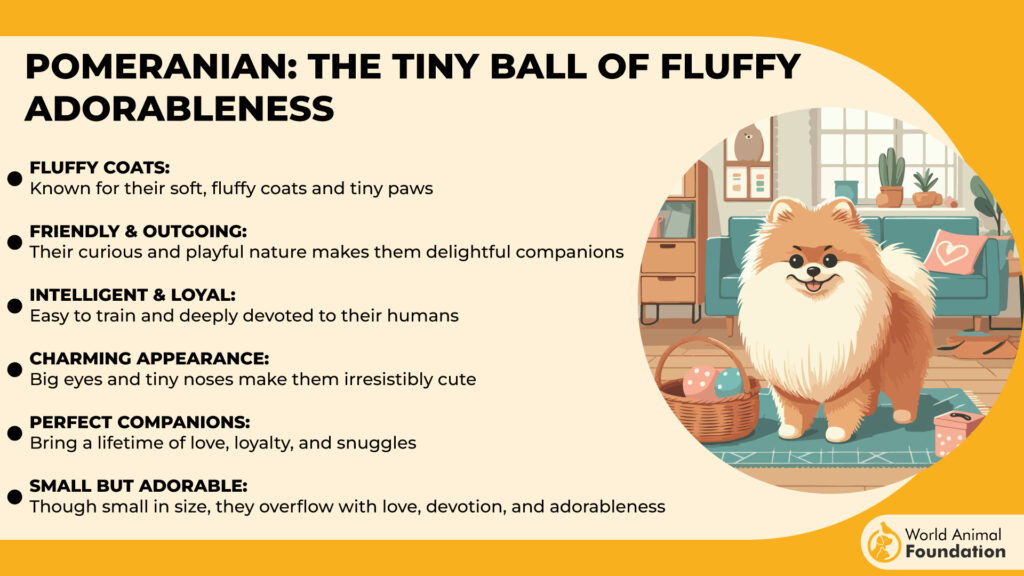Are you in search of the perfect family dog that can coexist peacefully with your household and smaller pets? When it comes to choosing a canine companion, understanding a dog’s prey drive is crucial—especially for families with young children or other animals. High prey drive can lead to chasing and unpredictable behavior, whereas breeds with a low prey drive are generally calmer and more controlled. In this guide, we’ll explore seven dog breeds renowned for their gentle nature and low prey drive, making them ideal additions to family life, ensuring safety and harmony in your home.
Did you know that nearly 67% of U.S. households own a pet, with dogs topping the list as the favorite? Choosing the right dog for your home can be tricky, especially if you have small animals or young kids. That’s where low prey drive breeds shine!
Unlike hunting dogs or herding breeds with a strong urge to chase, these dogs are calm, gentle, and adaptable. From the laid-back Bulldog to the lively Papillon, many dogs fit seamlessly into family life without causing stress to other pets like rabbits or cats. With proper training, the right food, and love, these dogs will quickly become cherished family members.
Explore this guide to discover amazing breeds with low prey drive, perfect for creating a peaceful and happy home. Whether you’re a first-time dog owner or adding to your furry family, there’s a breed here for you!
7 Dog Breeds with Low Prey Drive
1. Bulldog
Bulldogs are famously mellow and make excellent companions for families. Their stocky build and affectionate nature make them a top choice for dog owners seeking couch potato pets. While they’re not herding dogs or working breeds, Bulldogs are adaptable to many living situations, thriving even in small apartments.
Moreover, Britannica says they weigh 40–50 pounds and stand 13–15 inches tall. Despite being a brachycephalic breed, they enjoy moderate exercise like short walks. Early socialization ensures they get along with other dogs and pets.
|
Adaptable to small spaces |
Can be prone to health issues (e.g., breathing problems) |
|
Calm and easygoing, ideal for families |
Require regular grooming to maintain coat |
|
Low prey drive makes them great with other pets |
Limited stamina, so not suitable for active families |
2. French Bulldog
French Bulldogs are a smaller breed and one of the best dog breeds for families. Known for their charm and playful demeanor, these dogs love cuddles. As a brachycephalic breed, they’re not suited for intense physical activity but thrive on companionship. French Bulldogs have a low prey drive, making them compatible with other pets.
Want to know more? As per PDSA typically weighing 16–28 pounds and standing 11–12 inches tall, their compact size suits apartment living. Proper training ensures they remain friendly and sociable, even at the dog park.
|
Great for smaller living spaces |
Prone to overheating and respiratory issues |
|
Excellent temperament for family dogs |
Need health-tested parents to avoid genetic issues |
|
Low prey drive; good with small animals |
Limited endurance for prolonged activity |
3. Pomeranian
Pomeranians are little dogs with big personalities. Despite being in the terrier group, they have surprisingly low prey drive compared to many breeds. These lively pets are perfect for families and dog owners seeking a loyal companion. Early socialization is key to curbing their instincts to chase.
In addition to that, VCA claims that Pomeranians are truly one of the smallest dog breeds, weighing only 3–7 pounds and standing 8–11 inches tall. They need regular grooming and a fair amount of mental stimulation to stay happy.
|
Compact and ideal for apartments |
Require regular grooming and coat maintenance |
|
Friendly with family members and other pets |
Can be vocal if not trained properly |
|
Loyal and easy-to-train |
May be fragile around small children |
4. Cavalier King Charles Spaniel
Cavalier King Charles Spaniels are great family dogs, renowned for their affectionate and adaptable personalities. Originally bred as lap dogs, they have a gentle temperament that’s perfect for families with small children or other pets. Unlike high prey drive dogs like German Shepherds or Border Collies, Cavaliers are less likely to chase potential prey.
Purina adds that they weigh 13–18 pounds and stand 12–13 inches tall, they require moderate exercise and early socialization. Regular grooming helps maintain their silky coat.
|
Gentle and excellent for families with children |
Susceptible to heart-related health issues |
|
Good with cats and other animals |
Require regular grooming and coat care |
|
Easily trainable and highly adaptable |
Limited as a guard dog due to their friendly nature |
5. Maltese
The Maltese is a charming breed renowned for its elegance and affectionate nature. These little dogs thrive as companions, especially for families or seniors. They’re incredibly adaptable and are among the best dogs with low prey drive, making them safe around rabbits and other small animals. Unlike hunting dogs or herding breeds, their only time to “chase” might involve playful antics with friends or toys.
HillsPet mentions that Weighing 4 pounds and standing at 7–9 inches tall, Maltese require regular grooming to maintain their silky coat. Although they’re considered low-maintenance in temperament, their grooming routine needs consistency. Early socialization ensures they get along with puppies and other breeds. Their small size makes them ideal for smaller spaces.
|
Great dogs for apartments or small homes |
Requires frequent grooming to avoid matting |
|
Gentle and loving; good with other animals |
Fragile; extra care needed around young children |
|
Easy to train; highly adaptable |
May be prone to separation anxiety |
6. Papillon
Papillons are energetic and intelligent little dogs, making them a joy for active families. They’re incredibly loyal and bond deeply with their owners. Despite their small size, Papillons are not as fragile as some other breeds. While not working dogs or guide dogs, they are quick learners and excel with proper training.
Papillons may be small, standing just 8 to 11 inches tall and weighing 5 to 10 pounds, but they are bursting with energy and charm. Unlike high prey drive breeds like Airedale Terriers, they seldom have a strong urge to chase. With regular grooming and mental stimulation, they can be wonderful companions, even for families with other pets.
|
Intelligent and quick to learn |
Requires mental stimulation to avoid boredom |
|
Adaptable to various living spaces |
Can be vocal without training |
|
Loyal and great with other breeds |
Needs regular grooming and exercise |
7. Old English Sheepdog
The Old English Sheepdog is a herding breed known for its gentle and family-friendly demeanor. These large dogs are great with kids and other animals, making them ideal for dog owners with diverse households. Unlike high prey drive breeds like Labrador Retrievers or Golden Retrievers, they tend to have a calm temperament.
This breed, with a weight range of 60 to 100 pounds and a height of 21 to 24 inches, stands out as one of the larger low-prey-drive options. Regular grooming is essential due to their shaggy coat. Although not originally bred as guard dogs, their size can deter intruders. They require moderate exercise and benefit from early socialization.
|
Great family dogs, even with children and pets |
The high grooming needs due to their dense coat |
|
Adaptable and loyal |
May require extra training due to their size |
|
Calm and low prey drive; not aggressive |
Needs a fair amount of exercise to stay healthy |
Conclusion
Choosing the right dog often depends on understanding your lifestyle and the breed’s natural instincts. Dogs with low prey drive, like the Bulldog, Maltese, and Old English Sheepdog, make excellent companions for families with small children or households with other pets. Their calm temperament and adaptability allow them to integrate seamlessly into various environments.
It’s worth noting that while breeds like the Papillon and French Bulldog are small and affectionate, larger breeds like the Great Pyrenees also exhibit low prey drive, making them great family protectors. Unlike hunting dogs or breeds with a strong prey drive, such as Miniature Schnauzers or other terrier breeds, these dogs are less likely to chase small animals like rabbits.
Many dogs, such as the Bichon Frise, thrive with proper training and a balanced diet. By understanding your dog’s urges and providing the right food, exercise, and care, you’ll enjoy a loyal and loving companion for years to come.
In conclusion, selecting a dog breed with a low prey drive can be an ideal choice for families and children seeking a gentle and predictable companion. These breeds, known for their calm and agreeable nature, tend to display fewer tendencies to chase or hunt smaller animals. By prioritizing breeds with low prey drive, families can ensure a safer and more manageable environment, enhancing the bond between the dog and its human companions. Ultimately, these dog breeds contribute to a harmonious household, fostering lasting relationships built on trust and affection.









